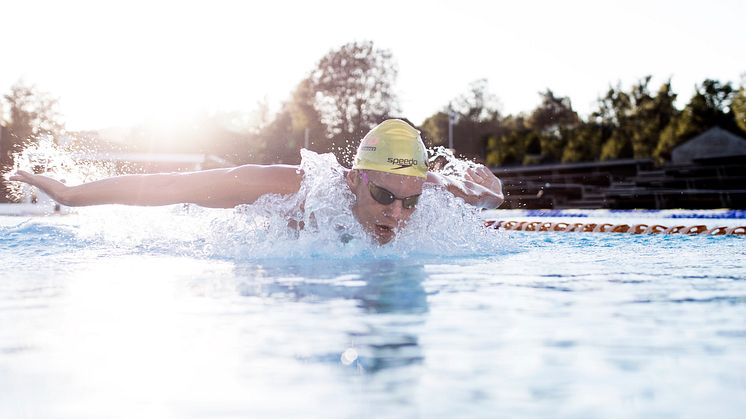
Blog post -
DIVE IN 3
I love all kinds of sports, but I've always felt swimming is the perfect way to exercise. It great for youngsters and oldsters alike. There's almost no chance you'll get an impact injury to a joint, yet you can achieve a fantastic aerobic workout. Best of all, there's not a lot of expense involved because you don't need to buy fancy equipment to build strength and get fit. What's not to like?
Well, in all honesty, while swimming is hard to beat for cardiovascular fitness and keeping your weight under control, it's not the best form of exercise to improve bone strength as it doesn't involve weight bearing. Still, why not add a little extra spice and variety to your training taking up weight-bearing exercises like walking, jogging, lifting weights, climbing stairs or engaging in a racquet sport like tennis, squash or badminton?
Let me quickly run you some of the other benefits I'm getting from swimming. For a start, swimming regularly will improve muscle definition and strength because swimmers moving through the water utilize more muscle groups. And you'll stay more flexible thanks to swimming because of the way you have to reach and stretch and pull your way through the water. If you are out to burn calories, then try a butterfly stroke workout - a ten-minute session can burn 150 calories, no sweat.
Okay, I hear you saying that the butterfly stroke is one of the hardest swimming strokes. It's physically demanding that's for sure - and requires upper body strength. Created in the 1950s, the butterfly stroke involves an undulating, dolphin-like body movement and simultaneous leg and arm actions. It's not for everyone and isn’t often used outside competitive swimming, but I find it hugely stimulating. I mean, who doesn't like the idea of swimming like a dolphin?
Getting your breathing right is vital to all swimmers. Getting the right breathing technique for each different stroke can be as challenging as learning how to float in the early days. But once you've mastered your breathing, you'll find your swimming becomes more relaxed. The trick, when swimming strokes that require you to put your head underwater, is to exhale continuously so that your lungs are pretty much empty when you lift your head. As soon as your mouth is clear of the water, inhale quickly. It's not a difficult skill to absorb, and you'll benefit from it once your swimming starts getting serious.
Good luck, now dive in!
